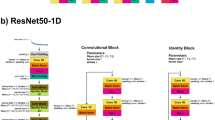Abstract
Atomic force microscope (AFM) is usually used to study the properties and surface structure of nanoscale materials. AFMs have three major abilities: force measurement, imaging, and manipulation. In the force measurement, AFM can be used to measure the forces between the probe and the sample as a function of their mutual separation. AFM compared to scanning electron microscope has a single image scan size; also the scanning speed of AFM is also a limitation. AFM images can also be affected by nonlinearity, hysteresis, creep of the piezoelectric material, and cross talk between the x, y, and z axes that may require software enhancement and filtering. Due to the nature of AFM probes, they cannot normally measure steep walls or overhangs in surface. In this study, the force between the Probe of Atomic Microscope and the surface is simulated by using force measurement ability of AFM and artificial neural network. The experimental data are used for training of artificial neural networks. The best model was found to be a feed-forward backpropagation network, with Logsig, Tansig and Tansig transfer functions in successive layers, respectively, and 3 and 2 neurons in the first and second hidden layers. According to the results, the proposed neural network is well capable of modeling the behavior of AFM probes in noncontact mode.













Similar content being viewed by others
Explore related subjects
Discover the latest articles and news from researchers in related subjects, suggested using machine learning.References
Burton EF, Hillier J, Prebus A (1939) Report on the development of the electron supermicroscope at Toronto. Phys Rev 56:1171–1172
Yang Q (2007) Advanced controller design using neural networks for nonlinear dynamic systems with application to micro/nano robotics. University of Missouri–Rolla, MO, USA
Lapshin RV (1995) Analytical model for the approximation of hysteresis loop and its application to the scanning tunneling microscope. Rev Sci Instrum 66(9):4718–4730. https://doi.org/10.1063/1.1145314
Lapshin RV (2004) Feature-oriented scanning methodology for probe microscopy and nanotechnology. Nanotechnology 15(9):1135–1151
Feynman RP, Leighton R, Sands M (1964) The Feynman lectures on physics, vol II. Addison Wesley, Boston, pp 8–10
Leite FL, Bueno CC et al (2012) Theoretical models for surface forces and adhesion and their measurement using atomic force microscopy. Int J Mol Sci 13(10):12773–12856. https://doi.org/10.3390/ijms131012773
Schalkoff RJ (1997) Artificial neural networks. McGraw-Hill, New York
Arifuzzaman MD, Saiful Islam M, Imtiaz Hossain M (2017) Moisture damage evaluation in SBS and lime modified asphalt using AFM and artificial intelligence. Neural Comput Appl 28:125–134
Norouzi A, Haedi M, Adineh VR (2011) Strength modeling and optimizing ultrasonic welded parts of ABS-PMMA using artificial intelligence methods. Int J Adv Manuf Technol 61:135–147. https://doi.org/10.1007/s00170-011-3699-2
BraunsmannC Tilman E (2014) Artificial neural networks for the automated analysis of force map data in atomic force microscopy. Rev Sci Instrum 85(5):056104
DME SPM (2018) Atomic force microscope scanner (AFM) DS 95-50/DS 95-200 datasheet. Semilab Germany GmbH. http://www.dme-spm.com/ds95.html. Accessed 3 Jan 2018
Cowan GR, Douglass J, Holtzman A (1964) Explosive bonding. US patent office. US 3137937 A
Skoog DA, Leary JJ (1992) Principle of instrumental analysis. Saunders College Pub, Philadelphia
Bird J (2010) Electrical and Electronic principles and Technology. Newnes Publishers, Oxford, pp 63–76
Author information
Authors and Affiliations
Corresponding author
Ethics declarations
Conflict of interest
The authors declare that they have no conflict of interest.
Rights and permissions
About this article
Cite this article
Sharifi, M.J., Khoogar, A.R. & Tajdari, M. Modeling forces between the probe of atomic microscope and the scanning surface. Neural Comput & Applic 31, 6419–6428 (2019). https://doi.org/10.1007/s00521-018-3446-9
Received:
Accepted:
Published:
Issue Date:
DOI: https://doi.org/10.1007/s00521-018-3446-9




